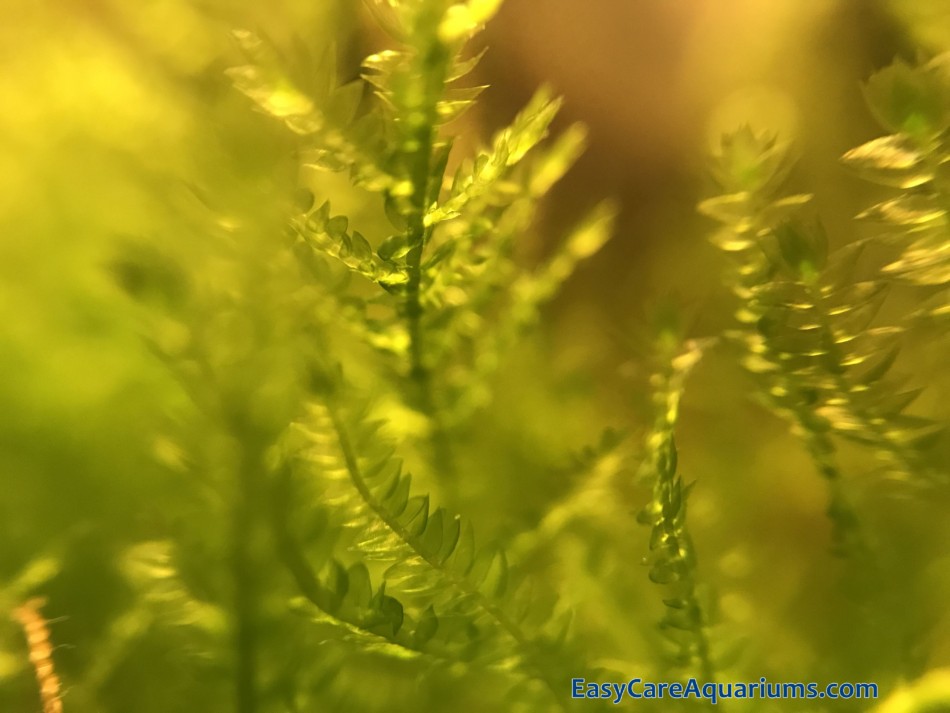This article may contain some affiliate links to products. The links provide me a small percentage of commission but do not cost you anything extra to use. (See full disclosure statement here ).
).
Using live plants to help cycle your tank is a great idea. In fact, having live plants in your aquarium is a good thing for the long term too.
Live plants cycle an aquarium by using up nutrients in the water that can be harmful to fish if the nutrients are not diluted/filtered out. Plants act as a natural biological filtering system and are, therefore, a natural way to cycle a fish tank. Plants also encourage the growth of beneficial bacteria within the aquarium.
Cycling your new freshwater fish tank using plants is not a complicated process. But you will need a little patience before adding fish to the tank.
So, let’s take a look at what you need to do to cycle your tank with live plants and get it ready for your new fish.
How To Cycle Your Aquarium Using Live Plants
All new tank setups need basic things to get them started. Depending on the needs of your particular planned tank inhabitants the basic things usually include: substrate (eg gravel), tank decorations and/or plants of some sort, and a filter. Maybe a heater. And lastly, but definitely not least, good quality/treated water.
If you’re using live plants to cycle your tank they will be a major consideration when it comes to setting your tank up.
Different types of plants appeal to different fish keepers. Whether that’s down to how fast they grow, how much work is involved in keeping them healthy, or simply how they look. It’s a matter of personal choice. And of course their suitability for the tank environment and the tank inhabitants is important too.
Tip: When using live plants to cycle a fish tank you need to have a generous amount of plants. The more plants there are the more efficient they will be at getting the tank cycled.
Choosing the right plants isn’t always easy. In the section below are some tips to help you decide.
How To Choose Plants To Cycle Your Fish Tank
Choosing plants to cycle your aquarium doesn’t need to be complicated. If you want to keep things simple with easy-care plants that’s just fine. You don’t need fancy plants to make this work.
In fact, if you’re new to fish keeping, starting off with easy-care plants is best. You can always add plants that require more care as you gain experience in the hobby.
Here’s a few easy-care aquarium plants that you can use to cycle your tank
- Java Moss
- Java Fern
- Hornwort
- Marimo Moss Ball
- Dwarf Rotala
- Bacopa Plants
- Water Lettuce
There are loads more plants to choose from so this is only a small selection for you to consider.
Once you’ve chosen and bought your plants just add them to the tank and let them do their thing.
Remember though you need to take note of any plant care instructions. It’s important to know if you need to provide them with fertilizer or a particular substrate for example. Some plants, even easy-care ones, need a little TLC. This is particularly true in a new tank set up where there are very little/or no nutrients in the water. So even plants that will eventually be fertilized organically by your fish are likely to need fertilizer added regularly to start with.
Once you have live plants in your tank they will start off the Nitrogen Cycle as they begin to grow.

How Do Aquarium Plants Help With The Nitrogen Cycle?
Aquarium plants help to kick start and maintain the Nitrogen Cycle in a fish tank by using nutrients in the water in order to grow. Some of the nutrients in aquarium water are harmful to fish if they become concentrated and are present at high levels.
Ammonia is the prime example of an aquarium nutrient that can be harmful, even deadly to aquatic life. Ammonia is produced by fish waste and other debris, such as leftover food, rotting plant leaves and dead fish.
Plants, along with any algae and beneficial bacteria in a fish tank, use this waste for their own benefit. And in the process they convert it into less harmful substances.
So simply by growing plants in an aquarium environment they help to keep the water clean and safe for your fish, shrimp and snails. This is particularly useful in new tank setups while the beneficial bacteria and algae are only just beginning to build up.
How Will I know If My Planted Fish Tank Is Cycled?
If you’re cycling your new freshwater aquarium using live plants there are a few indications that help you to know when it’s time to add some fish. The simplest way to tell is by looking at the plants and checking for new healthy growth. Check for signs of algae too, because despite algae often being considered a blight in a fish tank, it’s a good indication that things are going well in a new setup.
So new plant growth and a little algae are good signs that your aquarium has cycled.
However, there is a cautionary note to add
Even if the plants in your tank are doing well, and there’s a little algae creeping in, you still need to test the water before adding any fish to the tank.
You can test the water using an Aquarium Water Test Kit. Test Kits come in different forms from a simple dip-strip type, to one with several vials for checking different nutrients. As long as you use a reputable brand the style of test is yours to choose.
I use the Tetra Test Strips (<–found here on Amazon) because I find them simple and reliable to use. But if you prefer a test kit that allows you to test for just one or two things at a time the API Freshwater Master Test Kit
(<–found here on Amazon) because I find them simple and reliable to use. But if you prefer a test kit that allows you to test for just one or two things at a time the API Freshwater Master Test Kit (<–also on Amazon) has a good reputation for accuracy.
(<–also on Amazon) has a good reputation for accuracy.
Tip: It’s best to test the tank water regularly during the plant cycling process. Then continue to test regularly after you add your fish, particularly during the first few weeks.
Cycling a tank using live plants does take time. As I mentioned earlier you will need a little patience.
It can take roughly between 6-12 weeks for a planted tank to be fully cycled and ready for adding some fish. And even then you should only add a few fish at a time. When the first fish have been added you’ll need to wait again for at least a couple of weeks or so before adding any more fish, or other tankmates, such as shrimp or snails. And once again you should only add a few at a time.
Keep checking on the water quality using your test kit until your aquarium has become established over the next few months.
I know this sounds tedious but in any tank setup you shouldn’t add lots of fish at once. If you do you’ll be risking an ammonia spike that can kill off all of the tank’s inhabitants. It’s just not worth the risk.

How to Speed Up The Tank Cycling Process
If your patience is wearing thin waiting for your planted fish tank to cycle there are ways to speed things up a bit. Different fish keepers use different methods to move things along. So let’s take a look at some of the ways you can speed up the cycling of your new freshwater planted aquarium.
Bottled Bacteria – Adding bottled bacteria is probably the quickest way to get your new tank cycling while your plants are getting up to speed. A good example of bottled nitrifying bacteria is API Quick Start (like this one on Amazon) which is popular with a lot of aquarists. The amount you need will depend on the capacity of your tank. Just follow the instructions about adding it to the water.
(like this one on Amazon) which is popular with a lot of aquarists. The amount you need will depend on the capacity of your tank. Just follow the instructions about adding it to the water.
Use Cycled Media – If you also have an established tank you can use some of the matured filter media and/or some of the gravel, plants and tank water to get your new aquarium off to a good start.
Cycled filter media and gravel are particularly helpful because they are full of the beneficial bacteria that you need.
If this is your first tank you won’t have any of this to hand. But you could ask any fish keepers you know if they would be happy to give you some cycled stuff to help you get started in the hobby. Most fellow aquarists are happy to help each other out, and also to get people into the hobby. So it’s worth asking.
Add Snails – Another way to speed things up is by adding snails to your new tank while you’re waiting for it to be ready for your fish. You will need to purposely feed the snails because at the beginning there won’t be any algae or biofilm for them to eat. I have written about what Snails eat in more detail here .
.
Snails help to cycle an aquarium by eating and pooping which gets the Nitrogen Cycle going. And the plants get to use the nutrients from this to complete the cycle.
Snails are often tougher than some fish when it comes to tank maturity. But you do need to choose your snails carefully for this. Some snails eat live plants. Which is something you don’t want if you’re cycling your tank using plants.
For example, Nerite Snails won’t eat your plants (they will eat dead/decaying leaves) but Apple Snails just love to eat the healthy greenery in your tank.
Add Amano Shrimp – Amano Shrimp are generally considered pretty tough when it comes to shrimp varieties. It’s not unusual for experienced fish keepers to help a tank to cycle by adding several Amanos.
Just like adding snails to the tank it’s the eating and pooping that Amanos do that helps to get the cycle going more quickly. And Amano Shrimp won’t eat your plants. They will eat any dead leaves though but that’s good for your aquarium.
There are probably other ways to speed up the cycling of a planted tank. But these are the easiest ways to do it that I’ve come across so far. Check out one of my other articles about Amano Shrimp care by clicking here .
.


